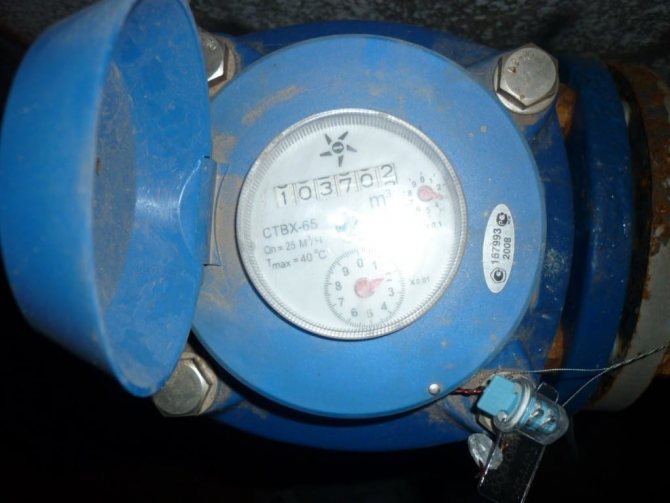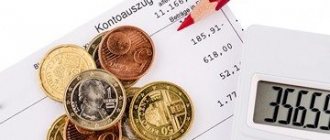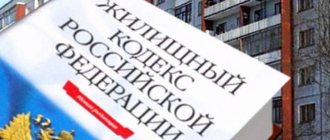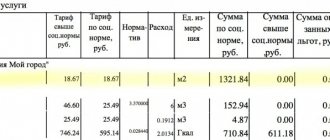Legal advice > Administrative law > Utilities > How are heating fees calculated according to the standard?
Heating tariffs are rising every year, and many consumers are interested in what they pay for and why the numbers on their bills are getting larger. The cost of heating is calculated according to the heat consumption standard, and in apartment buildings it depends on the heated area and on general house expenses.
Every consumer should know how heating fees are calculated according to the standard in order to be able to control the fairness of charges in the management company.
Regulatory base for calculating payments for heating
The size of the heating fee depends on various factors
In Russia, there are two main documents by which heating fees are calculated. The first of them is government decree No. 354 of 05/06/11. It regulates the rules for providing utility services to residents of apartment buildings. This document became an alternative to government decree No. 307 of May 23, 2006, but in practice the old decree is still in effect.
The decision on the rules by which payments are calculated is made at the local level; the region itself chooses the best option for itself. There is a very important difference between them: according to the Rules established in Resolution No. 354, heating fees are charged only during the heating season, and are not distributed over the entire year. On the one hand, this simplified the calculation methodology, on the other, it led to an increase in the financial burden on the consumer.
According to the new rules, rent increases sharply between October and May, as heating costs begin to be included in it. Many consumers are finding it difficult to pay increased bills, leading to more debt. According to the traditional method established in the rules. Resolution No. 307, consumers pay approximately the same amount for an apartment throughout the year, and it is adjusted taking into account the general increase in tariffs.
The amount of payment for heat depends on the installed general building meter, the presence of heat meters in apartments, as well as the presence of distribution sensors in residential and non-residential premises.
VS told how much to pay for heat if there is no meter
A dispute between MOEK and one housing cooperative reached the Supreme Court, arguing over how much to pay for heating without a meter. The calculation standard in Moscow is known, but as a result of a legal gap, it is not entirely clear how to calculate it for a certain period. You can use one of the two coefficients, but the difference in the result will be 70%. There should be only one correct option, so that one side does not get rich and the other does not suffer losses. The Economic Board of the Supreme Court made a choice and justified it.
How much should management companies (MCs) pay for heat if the house does not have a common house meter, the Supreme Court decided in one of its recent cases. The Moscow standard is known - 0.016 Gcal/sq.m. m per month, but there is still debate whether it is calculated for the whole year (12 months) or only for the heating season (7 months). The calculation procedure has caused confusion: in the capital, residents pay equally for heat throughout the year, according to Moscow Government Decree No. 468-PP dated September 10, 2012, and the Moscow United Energy Company (MOEK) issues management bills only during the heating season.
There were two points of view on how to calculate consumption:
If the standard is annual, it must be multiplied by 12 months a year (this option is supported by a reference to Moscow government decree No. 468-PP dated September 10, 2012, which simultaneously sets the standard for the month and states that the calculation must be made evenly over of the year). In this case, per year it turns out to be 0.192 Gcal/sq. m;
If the standard is seasonal, it should be multiplied by 7 cold months and divided by 12 (this option is supported by Government Decree No. 468-PP of September 10, 2012, which prescribes dividing the number of months of the heating period by 12 months). The annual output is 0.112 Gcal/sq. m.
According to Sergei Sergeev from MCA "Arbat" , judicial practice was tilted in one direction or the other, until the Moscow Government Resolution No. 435 of July 14, 2015 was issued, which “legalized” the coefficient 12/7. But no one explained how to calculate consumption until this day. That’s why a dispute arose between MOEK and the Privet housing cooperative about how much heating cost in 2012–2013. The energy company demanded 1.4 million rubles from the cooperative. debt, not counting interest on the use of money. The cooperative objected to the use of the 12/7 odds. The courts were divided in opinion in case No. A40-170280/2013. At the last round of consideration of the case, the Moscow Arbitration Court considered the standard to be seasonal, which means that a coefficient of 7/12 should have been applied. The Arbitration Court of the Moscow District agreed with this. The Supreme Court corrected them.
0.192 or 0.112 Gcal/sq. m
How much will the management company pay? This is the price of the issue in the dispute.
He referred to his own definition of APG16–19 from April 2016, when the legality of establishing the standard was checked. Then the Supreme Court stated that the standard was approved based on annual rather than seasonal consumption. This was done to ensure that the population paid evenly and their expenses did not increase significantly during the heating season. And since residents pay the management company all year, but it only pays for seven months, it is imperative to apply the 12/7 ratio - without it, an underpayment results, explained the Supreme Court board chaired by Ekaterina Kornelyuk. As a result, the panel upheld the decision of the 9th AAS, which made a decision in favor of the energy company.
Now there are many judicial acts that have entered into legal force with opposite conclusions, Sergeev reports. He assumes that MOEK will go to appeal the lost cases: “For it, the question now is to minimize the losses already received.” In general, the definition of the Armed Forces suggests that when applying standards, you need to clearly understand for what period they were established, analyzes Sergeev.
Deputy head of the judicial protection department of the Arbat MCA, Yuri Netreba, predicts a continuation of the “struggle for the wording” of the application of the 12/7 coefficient. After all, the figure for calculating the standard is 0.016 Gcal per square meter. m., of course, already took into account seasonality and the need to maintain networks during the unheated period, the expert notes.
- Housing and communal services, Courts and judges
- Arbitration Court of Moscow, 9th Arbitration Court of Appeal, Collegium of the Supreme Court for Economic Disputes
Calculation of fees for an uninstalled communal meter
A common house meter allows you to save
If an apartment building is not equipped with a common building meter, the heating fee is calculated based on three main factors:
- Heating standard. This is the number of gigacalories that are required to heat one square meter to the required temperatures. meters of area. Each region sets its own standard depending on climatic conditions.
- Heating tariff. This is the cost of one gigacalorie of heat established for a given region.
- The size of the heated area. In an apartment building, it does not include the area of the loggia or balcony.
Thus, the calculation of the heating fee in this case is carried out according to a relatively simple formula: Payment amount = standard * tariff * apartment area, standard and tariff are set by regional authorities.
The final cost of heat does not depend on the number of calories of thermal energy actually consumed, so this method of calculation is used less and less. Currently, a campaign is underway throughout Russia to improve the energy efficiency of heat supply, so heat meters are being actively installed.
Calculation formula for a common building meter in an apartment building
Next you need to figure out how heating is calculated in an apartment building if there is a common meter. It is worth noting that communal heat meters in an apartment building allow all residents to save money. Provided that such a device is available, heating calculations are carried out in accordance with its readings. What is important is that individual metering devices may already be installed in individual apartments, but if not every apartment has them, then the calculation is still carried out based on general indicators.
The formula for calculating heating using a common meter is as follows:
- Pi = VД x Si/Sob x TT, where
- TT is the tariff cost of heat set for a particular region by the local supplier,
- VD is the total volume of heat consumed by the building, which is determined by the difference in the readings of the common meters installed at the input and output of the heating circuit of the building,
- Si – total area of a heated apartment not equipped with an individual meter,
- Sob is the total heated area in the entire building.
Substitution of specific values is carried out in exactly the same way as in the previous example. When the formula takes into account all the necessary values, you can calculate heating in an apartment building.
Calculation of fees when a communal meter is installed
A more common situation today is that a common building meter is installed in an apartment building, while there are no individual heat consumption meters in the apartments. The engineering communications designs in many buildings are such that individual meters simply cannot be included in the heating system, and each consumer does not have the opportunity to independently increase or decrease heat. In this case, the calculation is based on four main parameters:
- The total amount of thermal energy consumed by the house is determined by the readings of the general house meter. Its installation allows you to avoid paying for heat lost along the way due to uninsulated heating mains and other problems of heating networks.
- Heated area of the consumer's apartment or non-residential premises.
- Total heated area of the building. All residential premises are taken into account, as well as entrances, attached shops connected to a common heating system, etc.
- The tariff for thermal energy established by law. Tariffs are determined by local authorities.
The calculation formula is as follows: Heat payment = total volume * apartment area/house area * established tariff. In this way, the distribution of fees becomes more equitable, since each house actually pays only for itself.
However, even in this case, the calculation system is not ideal: since consumers do not have the ability to control heat consumption, they often have to simply “heat the street”, releasing heat outside due to its excess. However, you will still have to pay for it in full. Because of this, a more modern payment option with individual meters is becoming increasingly popular.
Formula for proportional distribution of payment according to the indicators of the common house meter
The calculation is made if there is a single common household device for determining heat consumption, and individual housing is completely or partially under-equipped with such meters.

The fee is calculated according to formula No. 3, Appendix No. 2 of the rules for calculating heat consumption (Resolution No. 344).
Where:
- tariff for thermal energy established for the entire region by the service provider;
- the volume of consumed thermal energy, taken from the difference in the indicators of common house meters at the entrance of the heating main to the house and at the exit from it;
- the total area of the heated room in the apartment without an individual meter;
- the total area of all heated rooms in the house.
Example
In total, 300 gigacalories were required to heat the house.
The apartment has an area of 50 m2.
All apartments and non-residential, but heated premises occupy 10,000 m2.
The regional tariff for heat is 1,300 rubles per 1 gigacalorie.
Substituting the data into the formula, we get: 300 x 50 / 10000 x 1300 = 1950 rubles.
Calculation of fees for installed individual meters
An individual meter allows you to pay for the heat actually consumed
If all apartments have individual heat consumption meters installed, the calculation will become more complex, but in the end the consumer pays for the energy actually used, and this option turns out to be the most profitable. The following parameters are taken into account when calculating:
- The amount of heat consumed by one residential or non-residential premises is determined by the readings of an individual meter. At least 95% of the premises in the building must be equipped with metering devices.
- The amount of heat consumed by the entire house is taken into account based on the readings of the common house meter.
- The area of the apartment for which the heating fee is calculated.
- Total heated area of the house. The area of residential and non-residential premises is taken into account.
- The tariff set by the government for thermal energy.
All these parameters are taken into account when calculating using the following formula: Fee amount = (individual heat + total heat * apartment area / total area) * tariff.
The sum of the individual meter readings is subtracted from the readings of the common house meter, and the remainder is divided among all consumers. Thus, the residents of the house independently pay for heating the entrance and other general purpose premises, but the main calculation is carried out on the basis of individual meters.
This allows you to significantly reduce heating costs, since you don’t have to pay for worn-out networks and endless utility breakdowns. And yet, the option with individual meters is not always possible to implement: most often a common house meter is installed in the house, and as a result, residents still have to partially pay for each other. This also causes difficulties in dealing with debtors: it is impossible to disconnect them from a single heating system, and as a result they continue to use heat paid for by other people.
Calculation of the payment amount for individual meters with an additional amount for the house
Calculation of the cost of heat in the presence of an individual and communal heating meter is carried out not only if all non-residential and residential premises in the house are equipped with individual meters, but also if there are only common devices for a separate apartment.

In this case, the cost of heat per apartment is calculated as the sum of the energy that was used according to individual devices and general house consumption.
Its cost is distributed proportionally among all apartments. All actions and tariffs are regulated by formula No. 3 (1), Appendix No. 2 of Resolution No. 344, where:
- the total volume of heat used according to an individual meter;
- the amount of heat that was expended exclusively for heating the non-residential premises of the entire house is calculated as the difference between the sum of all individual indicators and a single one - the general one;
- the entire area of the apartment (with one individual meter);
- the area of all heated rooms in the house.
Example
Thermal energy consumed by the house during the reporting period is 300 gigacalories.
The amount of heat consumed by all apartments is 210 gigacalories.
The heat consumed in one apartment is 2 gigacalories.
The cost of providing hot water supply is 20 gigacalories.
The total area of the apartment is 50 m2.
The total area of the apartments and all non-residential but heated premises in the house is 10,000 m2.
The tariff for thermal energy from the service provider for the same region for 1 gigacalorie is 1,300 rubles.
We substitute the data into the formula and get: (2+(300-210-20) x 50/10000) x 1300 = 3055 rubles.











